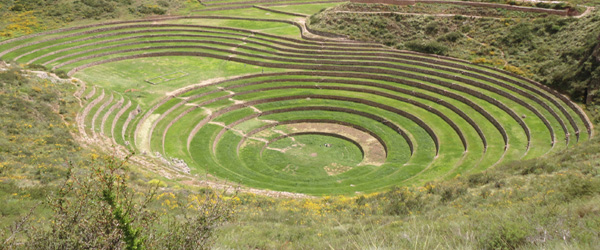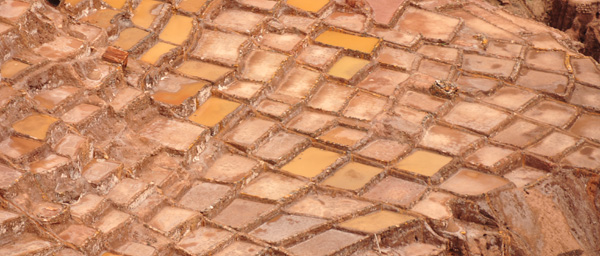The fascinating Incan terrace designs of Moray in the Sacred Valley. There are 3 of these circular terraced constructions, each built to different depths adjacent to each other along the length of a valley. There are many fascinating aspects to this site, largely believed to be an agricultural experimental zone built by the Inca’s. Each circle creates a unique micro-climate with different temperates, soil types and other conditions that simulate environments and enable cultivation of a range of crops from the major regions of Peru. (ie mountains, jungle and coastal zones). As you descend the terraces, the temperature changes noticeably and you become aware of a special peace and energy. Many believe that there is more to this than agriculture (think astronomy, aliens), certainly the Andean people and their shaman come here to conduct ceremonies and make offerings to Panchama – mother earth. Whatever its original function though, it is indeed a special place!
Incan Laboratory – Moray, Sacred Valley, Peru

